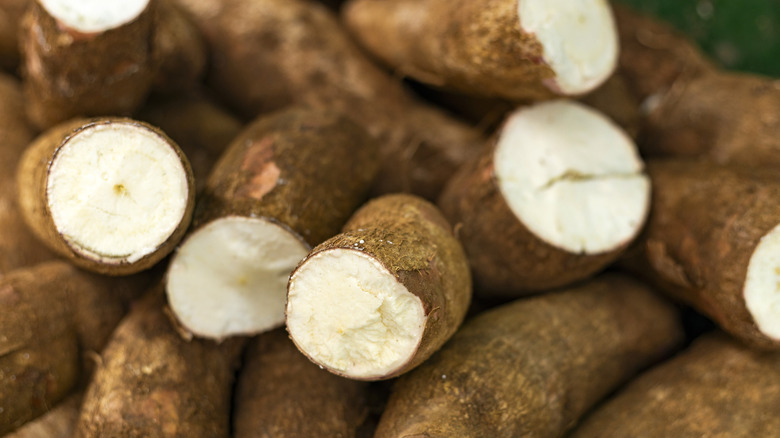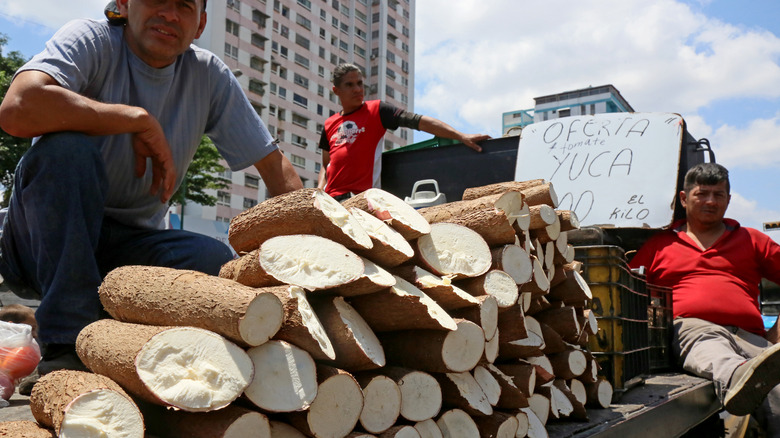What's The Difference Between Yuca And Potatoes?
If you're a fan of starchy comfort foods, you've probably had plenty of potatoes in your life (fried, roasted, or Millionaire Mashed Potatoes over the holidays). But have you met yuca yet? Also known as cassava, this tropical root is essential in global food circles, so it's worth a closer look. While yuca and potatoes share some surface-level similarities, they're surprisingly different once you "dig" in. We know that potatoes are the O.G. root vegetable of the Andes. Cultivated for thousands of years in South America, they eventually made their way to Europe and became a staple almost everywhere. They come in all shapes, sizes, and colors; think buttery Yukon Golds, fluffy Russets, or those pretty purple Peruvian varieties.
Yuca, on the other hand, hails from the tropics. A tuber native to South America but now grown in Africa, Asia, and Latin America, it's a food security crop that thrives in poor soil and dry conditions. This makes the knobby root a lifeline food in many parts of the developing world. Its surprisingly rugged appearance includes a bark-like brown skin with bright white flesh inside. Both of these root veggies are high in carbohydrates, but yuca packs in more calories and starch per serving. It's often touted for its health benefits in terms of digestive health and blood glucose control while also being a good source of vitamin C. Just like potatoes, yuca can be prepared in a variety of ways: boiling, baking, frying, or mashing.
More than just a side dish
Potatoes are mild, soft, and versatile — kind of like the blank canvas of the food world. The world's fourth-most important crop can be waxy, starchy, buttery, or somewhere in between. Yuca, on the other hand, has a slightly nutty, earthy flavor and a dense, chewy texture. When boiled, it becomes tender but holds its shape. Yuca's high starch content makes for incredible french fries, they're crispy on the outside and creamy on the inside.
When it comes to preparation, yuca needs a little extra attention. It naturally contains cyanide which can be toxic if not properly prepared. No need to fret, it's perfectly safe once peeled, soaked (in some cases), and thoroughly cooked. You just can't eat it raw or undercooked. Potatoes are a little more forgiving, but green or sprouting potatoes should be avoided due to solanine, a naturally occurring toxin. For the most part, you can wash, peel (or not peel), cook, and eat potatoes with minimal fuss.
Yuca is still somewhat niche in Western kitchens, but it's a primary ingredient for roughly 800 million people around the world. It's also (fun fact) the root behind tapioca pearls. While potatoes fueled revolutions and caused country-wide famines in Europe, yuca has long been a survival food for communities across the tropics. Its remarkable resilience and versatility make it vital in drought-stricken regions, while its future growth as a multipurpose crop is a big topic in geopolitics and sustainability.

